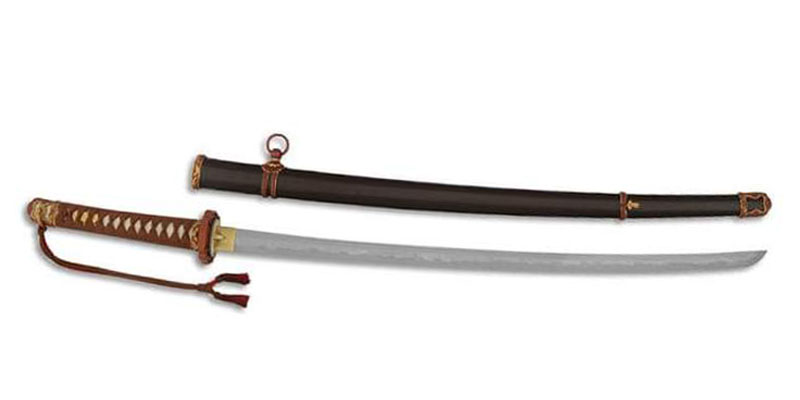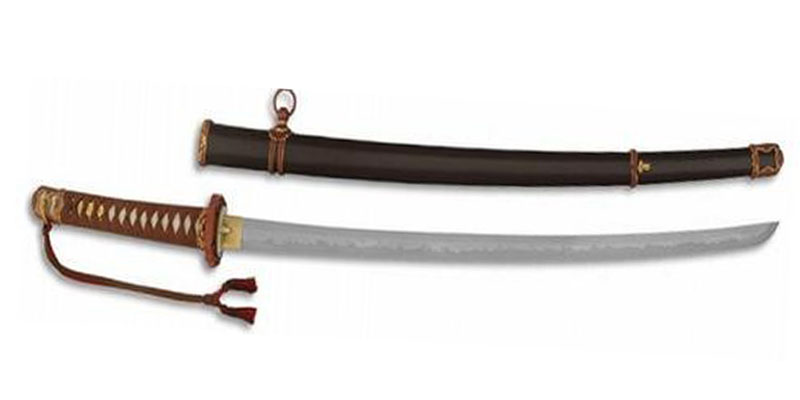JAPANESE GUNTO SWORDS FROM WORLD WAR 2
The Gunto is a military sword with a ceremonial character. The Japanese army had these swords made for the Imperial Army and Navy.
When the Edo period ended and turned into the Meiji period, carrying a sword in public was prohibited. The samurai class was disbanded by the Haitorei Edict in 1876.
Most swordsmiths became unemployed and had difficulty supporting themselves. Swordsmiths experienced a major revival during the Showa period of 1926 and 1989 due to the expansion of the Japanese empire. During this period, swords were forged on a large scale with which they could supply the Japanese army.
Below is a replica of Hanwei - Yasukuni Captains Gunto Sword
Especially before and during the Second World War, there was a great demand for swords because all Japanese officers carried a sword. While the traditional way of forging with tamahagane was also used, there was an excessive demand for swords. Blacksmiths arrived with little knowledge of swords and they started forging swords from other types of steel. Other techniques were also used in the process of forging swords. Forging was now done with power hammers and hardening was usually done in oil instead of water. Due to the many changes, most swords did not have the traditional characteristics that an authentic Japanese sword should have.
SHOWATO
Non-traditional swords made in the showa era between 1926 and 1989 are called showato . These swords also usually have a stamp to distinguish them from traditionally made Japanese swords. During the war period, antique swords from older periods were sometimes mounted in an army version. Despite the large number of swords that have been produced, there is great demand in many collectors' circles if they are still in good condition.
KYU-GUNTO (OLD MILITARY SWORD)
This is the first large-scale production sword of the Japanese army. A major role in this was played by Japanese General Murate Murata Tsuneyoshi (1838-1921). At first he mainly had guns made, but he also focused on making non-traditional Japanese swords.
That is why these swords are also called Murata-to and were used in both the Japanese-China war (1894-1895) and the Japanese-Russian war (1904-1905). This sword was used from 1875 to 1934 and is very similar to American and European swords.
The pre-1945 kyu-gunto were still made in relatively small quantities for the growing Japanese military officers. To take into account the legacy of sword culture from the samurai , swords were forged with styles from earlier periods and family weapons.
SHIN-GUNTO (NEW MILITARY SWORD)
The Shingunto is the Japanese sword that most people picture as a Japanese sword from the Second World War. In the Japanese army between 1935 and 1945 this was a symbol of your rank. These swords are often made in Toyokawa Naval Arsenal.
The style of this gunto was based on the tachi from the Kamakura period (1185-1332). Colored tassels indicated the ranks.
- Generals: brown-red and gold for generals
- Field officers: brown and red
- Non-commissioned officers: brown and blue
- Sergeants and corporals : brown
The Shingunto blades were usually machine made. But also traditional with modern techniques to antique swords hundreds of years old.
An original gunto has the serial number on the blade, tsuba and saya and these must match each other.
Almost all Gunto parts can be found in four types, the 94, 95 and 98
TYPE 94 GUNTO
This replaced the Kyu-Gunto in 1934 and was an officer's sword. The features were a traditional construction of the handle with shagreen and wrapped in a silk ito. You could find the cherry blossom in all fittings because this was the symbol of the Imperial Japanese Army. The tsuba , fuchi , kashira and menuki had this theme. A metal brown sheath with wooden interior and two copper holders.
Below Gunto Type 94
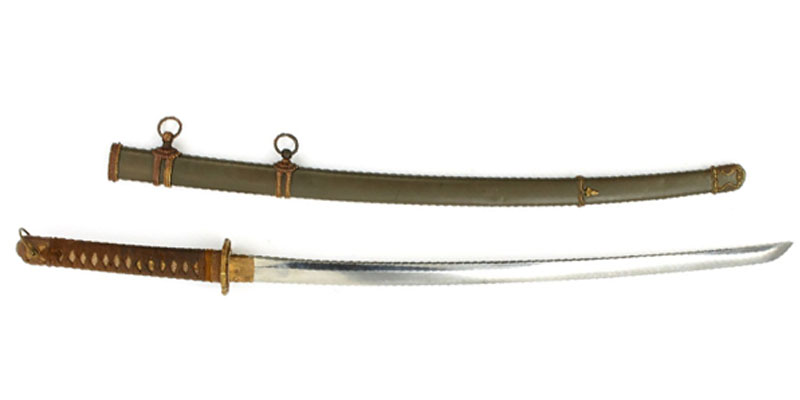
TYPE 95 GUNTO
This sword version was especially for non-commissioned officers and was cheaper to mass produce. All blades were almost provided with a bo- jhi or longitudinal groove and serial number. The quality of this series was a lot worse than that of type 94. There are old types with only a wooden handle. The ornaments were often made of steel and painted to resemble brass.
Below Gunto Type 95
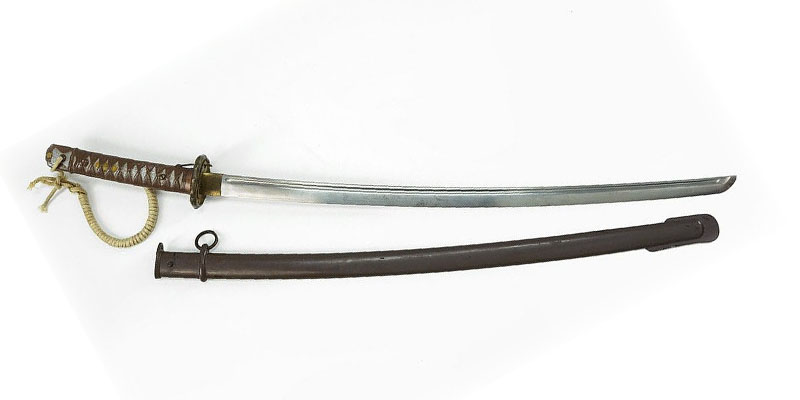
TYPE 98
In 1938 another type was introduced and this was in fact a simplification of type 94. The two suspension rings on the scabbard were often omitted and due to the scarcity of iron in Japan, the scabbards were made entirely of wood with cheap ornaments . There are also gunto that no longer had suspension rings at all.
Below Gunto Sword Type 98
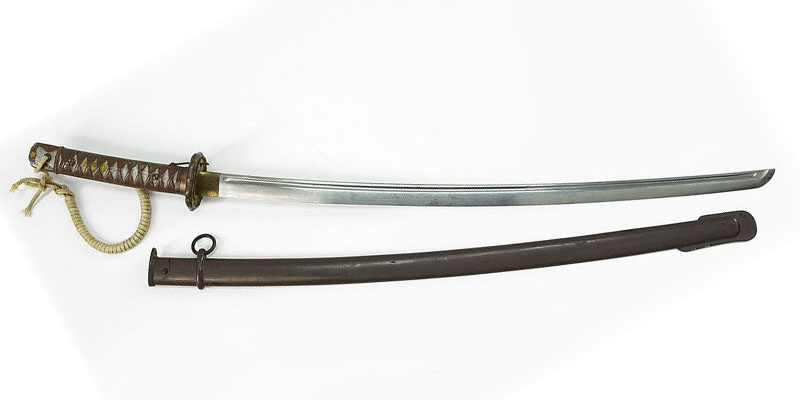
KAIGUNTO (SEAWORD)
These are the Navy swords and they were produced with stainless steel blades.
Below a Kai Gunto Sword
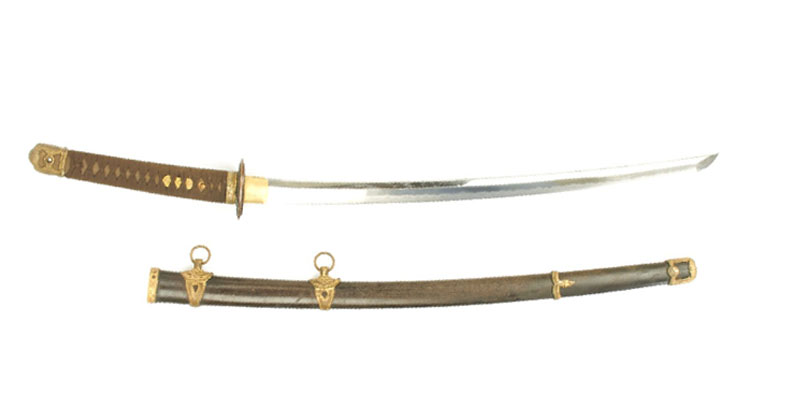
All in all, there are quite big differences between the different styles. There are known gunto swords with traditional antique blades. But most swords have blades and fittings of inferior machine quality and are not traditionally made at all. Due to the large circulation and often low quality of the swords, they are nevertheless still highly sought after by collectors, provided they are still in good condition.
We have modern replica Gunto Swords from Hanwei , but if you want to buy a katana then you have also come to the right place.
Below is a Gunto from Hanwei - Hanwei Yasukuni Colonels Gunto
